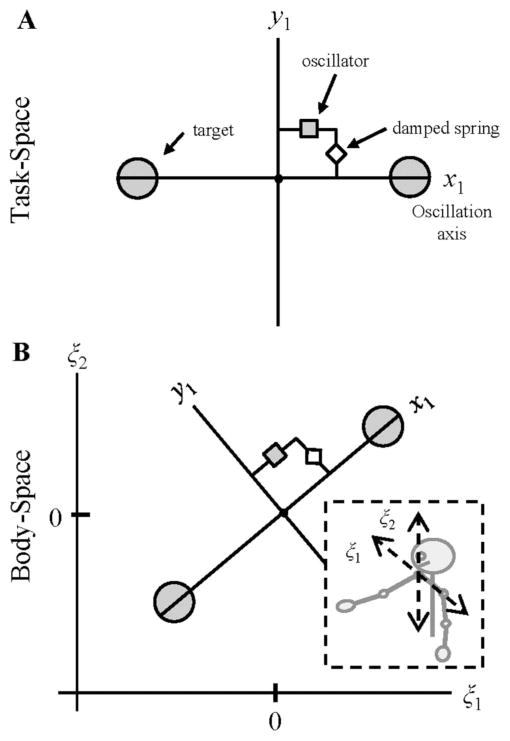Figure 6.
(a) 2-dimensional task space for an individual instructed to perform a simple point-mass (end-effector) rhythmic movement task. (b) The 2-dimensional task space embedded at a 45° angle within a shoulder-centered, body-space coordinate system. For the task space, x1 corresponds to the axis of instructed direction of oscillation, with movement along this axis defined by a limit cycle oscillator. x2 corresponds to orthogonal deviations away from the principal movement axis, such that movement along the orthogonal axis can be defined by a simple damped mass-spring function. ξ1 and ξ2 correspond to the horizontal (frontal) and vertical (sagittal) dimensions of the task movements with respect to shoulder-centered body-space.

